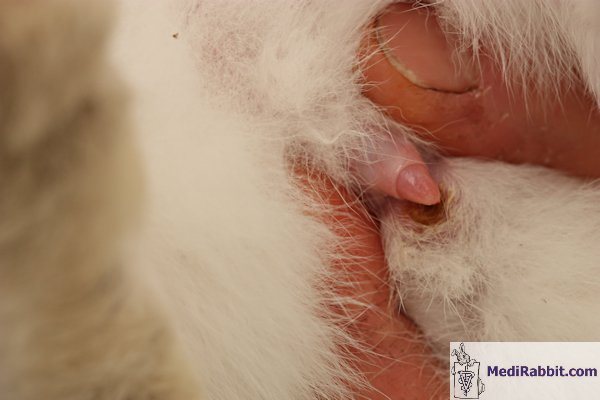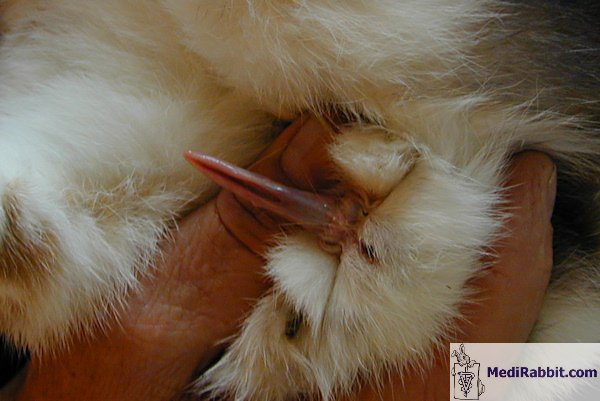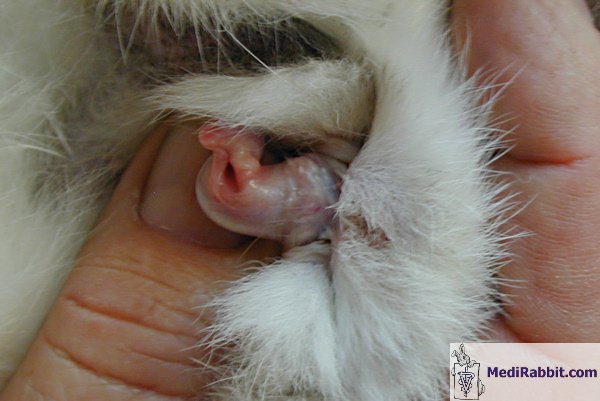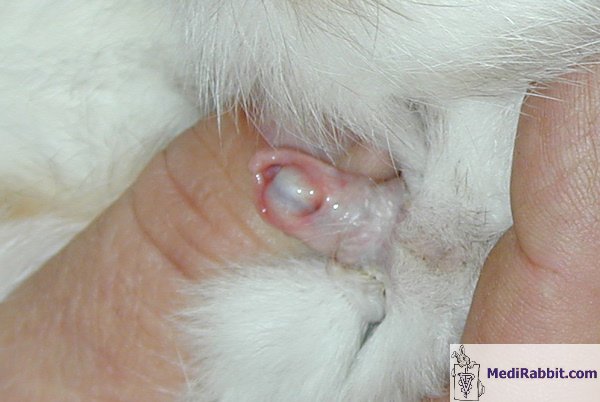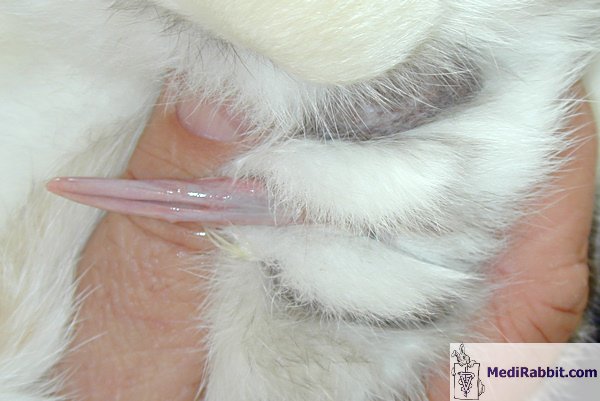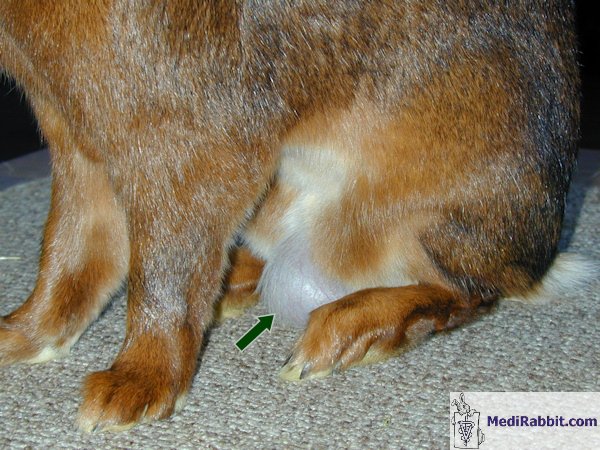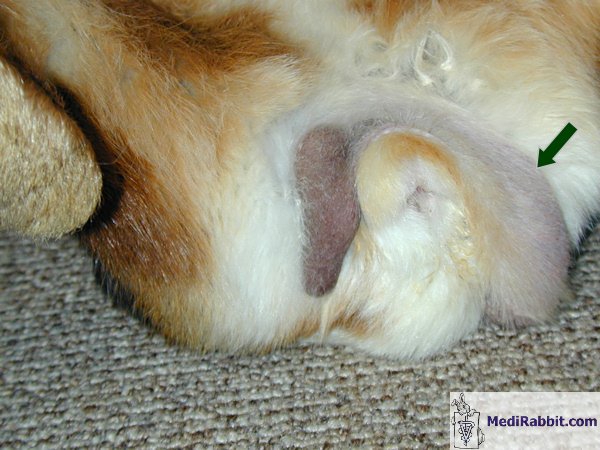Congenital anomaly in male rabbits:
split penis or hypospadias
Esther van Praag, Ph.D.
|
MediRabbit.com is
funded solely by the generosity of donors. Every
donation, no matter what the size, is appreciated and will aid in the
continuing research of medical care and health of rabbits. Thank you |
WARNING: this file contains
pictures that may be distressing for people.
|
Hypospadias
is a congenital anomaly of the penis that is observed relatively frequently
in men. It also affects animals and has been observed in all breeds of
rabbits. The closure of the penis is incomplete. This is due to the
incomplete development of penile tissue that forms the anterior urethra
(spongy urethra), the canal through which urine is discharged from the
bladder to the outside during voiding. As a consequence, the external orifice
of the urethra (urinary meatus) is found on the underside of the penis, with
an opening located more or less close to the tip of the penis (gland), or as
a split. The foreskin is usually underdeveloped et found only on the upper
side and on the sides of the penis head. The
anomaly is classified from light to severe and may be accompanied by an
abnormal curvature of the penis. Etiology
Etiology
of this problem is not well understood. When the problem is regularly
observed in a rabbit lineage, a genetic predisposition with autosomal
recessive inheritance is suspected. When it appears sporadically, exposure to
certain environmental factors that influence the endocrine system and the
hormonal secretion is alleged. The
development of the male genital system during the embryonic phase is complex,
involving a precise genetic programming, with activation of specific genes
that encode for proteins that regulate the production and secretion of
testosterone. This phase is accompanied by cell differentiation, enzyme activity
et remodeling of tissues. It results in the formation of the penis, penile
urethra and foreskin. When a gene functions improperly or is
mutated, or when an exterior factor influences the hormonal secretion, normal
development of the mass of spongy tissue surrounding the male urethra within
the penis (corpus spongiosum) and of the foreskin is deficient or
aborted. As a result, the penis does not completely close on the underside
and remains split.
Other
than an abnormal looking penis, the male rabbit does not suffer from this condition
and may become a perfect house-rabbit. It happens that he will not be able to
pee straight, but sideways against the inner side of his hind limbs. This may
cause urine burn and loss of fur. If the deformation is light and
located near the tip of the reproducing organ, males may mate and reproduce
successfully. The rate of fertility is decreased as produced sperm is spread
along the split and not only at the tip. The further the anomaly is located
far from the gland, the more the rabbit will be infertile. If this condition
is accompanied by a curved penis (chordee), mating
is no more possible.
In men, hypospadias may be accompanied
by the failure of testicles to descend into the scrotum (cryptorchidism) or by
an inguinal hernia in the groin region or in the scrotum. No information is
available for rabbits. This hernia forms in the inguinal canal, where the
spermatic cord and the testicular blood vessels pass from the abdominal
cavity into the scrotum. A muscle weakness within the abdominal tissue leads
to the formation of a pocket. A loop of the intestine or the bladder can
enter into the pocket in the groin or scrotal regions, respectively.
Acknowledgement
Many thanks to Michel Gruaz (Switzerland) for the permission to use his pictures. Further information
Baskin LS,
Ebbers MB. Hypospadias: anatomy, etiology, and technique. J Pediatr Surg. 2006;41(3):463-72.
Higuchi
TT, Palmer JS, Gray LE Jr, Veeramachaneni DN.
Effects of dibutyl phthalate in male rabbits
following in utero, adolescent, or postpubertal
exposure. Toxicol Sci. 2003;72(2):301-13. Meyer J.
Genetische Defekte und züchterische Auslese. KaninchenZeitung. https://www.kaninchenzeitung.de/?redid=352569&seite=0 11.05.2011 |
||||||||||||
e-mail: info@medirabbit.com



